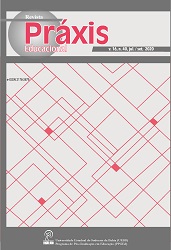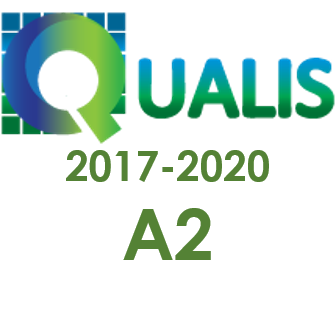¿POR QUÉ, PARA MANIPULAR LA REALIDAD, NECESITAMOS REDUCIRLA?
DOI:
https://doi.org/10.22481/praxisedu.v16i40.6909Palabras clave:
Manipulación, Humanidad, RealidadResumen
Es difícil exagerar la importancia de esta "suposición ontológica y epistemológica", que está en el corazón de la ciencia eurocéntrica ("dictadura del método") positivamente negativa, agresivamente reduccionista (a la "lógica-experimental" y materialista). que se ajusta al método). Sin embargo, también es difícil exagerar la importancia de esta visión modernista de la ciencia, uno de los responsables más llamativos del éxito tecnológico occidental, un éxito que hace desafiar el positivismo de la empresa. Tengamos en cuenta que la tecnología digital reedita, con una contundencia sin precedentes, el ethos lineal, secuencial y formal de la ciencia modernista, en un contexto de eficiencia superlativa: la computadora es una máquina formidable ("superinteligente"), hasta el punto de poder, según muchos, suplantar en inteligencia la inteligencia humana.
Descargas
Métricas
Citas
ALTHUSSER, L. 1971. La Revolución Teórica de Marx. Siglo XXI, México.
ALTHUSSER, L. 1980. Ideologia e Aparelhos ideológicos do Estado. Editorial Presença, Lisboa.
BELLAH, R.N. 2011. Religion in Human Evolution – From the Paleolithic to the axial age. The Belknap Press of Harvard University Press, Cambridge.
BOURDIEU, P. & PASSERON, J.C. 1975. A Reprodução - Elementos para uma teoria do sistema educativo. Francisco Alves, Rio de Janeiro.
CHOPRA, D., PENROSE, R., CARTER, B. et alii. 2015. How consciousness became the universe: Quantum physics, cosmology, relativity, evolution, neuroscience, parallel Universes. Amazon, N.Y.
CHRISTIAN, B. & GRIFFITHS, T. 2016. Algorithms to live by: The computer science of human decisions. Picador, N.Y.
DAMASIO, A. 2018. The strange order of things: Life, feeling, and the making of cultures. Pantheon, N.Y.
DANTZIG, T. 2005. Number – The language of science - http://www.engineering108.com/Data/Engineering/Maths/Number_the_language_of_science_by_Joseph-Mazur_and_Barry-Mazur.pdf
DAVIES, P. & GREGERSEN, N.H. (Eds.). 2011. Information and the nature of reality. Cambridge U. Press.
DAVIES, P. & GREGERSEN, N.H. (Eds.). 2011. Information and the nature of reality. Cambridge U. Press.
DEMO, P. 1995. Metodologia científica em ciências sociais. Atlas, São Paulo.
DEMO, P. 2001. Pesquisa e informação qualitativa. Papirus, Campinas.
DEMO, P. 2011. Forças e fraquezas do positivismo – https://docs.google.com/document/pub?id=1eew1D-Lz18JrIGLMkk5qlN4b87EzlwUFF--E0Gsc3uE
DEMO, P. 2018. Educação como estratégia de ranqueamento social – Retomando a sociologia da educação reprodutiva, hoje – https://docs.google.com/document/d/e/2PACX-1vRP-_QGPYiReXLcH0rObkh7u7HuWSMC28vvtms3H76vMsmsRqzPwhoax_ws3HGy4-Fqzn_yzLz4MRf8/pub
ENGELS, F. 1979. Dialética da Natureza. Paz e Terra, Rio de Janeiro.
FAYER, M.D. 2010. Absolutely small: How quantum theory explains our everyday world. AMACOM. Amazon.
FREIRE, P. 1997. Pedagogia da Autonomia – Saberes necessários à prática educativa. Paz e Terra, Rio de Janeiro.
FRY, H. 2018. Hello World – Being human in the age of algorithm. Norton & Company. N.Y.
GERRISH, S. & SCOTT, K. 2018 How smart machines think. The MIT Press.
GIERE, R.N. 1999. Science without Laws. The University of Chicago Press.
GLEICK, J. 2011. The Information: A history, a theory, a flood. Pantheon, N.Y.
GROSZ, E. 2017. Incorporeal: Ontology, ethics, and the limits of materialism. Columbia U. Press, N.Y.
HARARI, Y.N. 2017. Homo Deus – A brief history of tomorrow. Harper, London.
HARARI, Y.N. 2018. 21 Lessons for the 21st century. Spiegel and Grau, N.Y.
HARRIS, S. 2014. Waking up: A guide to spirituality without religion. Amazon, N.Y.
HOFFMAN, D. 2019. The case against reality: Why evolution hid the truth from our eyes. Norton, N.Y.
HUBBARD, D.W. 2010. How to Measure Anything: Finding the Value of Intangibles in Business. Wiley, N.Y.
IOSCHPE, G. 2004. A Ignorância Custa um Mundo - O valor da educação no desenvolvimento do Brasil. Francis, São Paulo.
KAHNEMAN, D. 2011. Thinking, Fast and Slow. Penguin, N.Y.
KAUFFMAN. S.A. 2019. A world beyond physics: The emergence and evolution of life. Oxford U. Press.
LASZLO, E. (with Alexander Laszlo, Deepak Chopra, and S. Grof). 2016. What is reality? The new map of cosmos, consciousness, and existence. SelectBooks, N.Y.
LATOUR, B. & WOOLGAR, S. 2013. Laboratory Life – The construction of scientific facts. Princeton U. Press.
LATOUR, B. 2000. Ciência em Ação – Como seguir cientistas e engenheiros sociedade afora. Editora UNESP, São Paulo.
LATOUR, B. 2001. A Esperança de Pandora. EDUSC, São Paulo.
LATOUR, B. 2013. An Inquiry into Modes of Existence – An anthropology of the moderns. Harvard University Press, Cambridge.
LÉVI-STRAUSS, C. 1967. Antropologia estrutural 1. Tempo Brasileiro, Rio de Janeiro.
LÉVI-STRAUSS, C. 1976. Antropologia estrutural 2. Tempo Brasileiro, Rio de Janeiro.
LIPSON, H. & KURMAN, M. 2016. Driverless: Intelligent cars and the road ahead. The MIT Press, Cambridge.
MANGUEL, A. 1996. Uma História da Leitura. Companhia das Letras, São Paulo.
MARX/ENGELS. 1983. Werke. Vol. 23. Dietz Verlag, Berlin.
NOWAK, M. (with Highfield, R.) 2011. SuperCooperators: Altruism, evolution, and why we need each other to succeed. Free Press, N.Y.
PIAGET, J. 1990. La Construction du Réel chez l’Enfant. Delachaux & Niestlé, Paris.
PLATÃO. 2010. Apologia de Sócrates, o Banquete e Fedro. Folha de São Paulo.
POPPER, K.R. 1959. The Logic of Scientific Discovery. Hutchinson of London, London.
PRIGOGINE, I. & STENGERS, I. 1997. A Nova Aliança. Ed. UnB, Brasília.
PRIGOGINE, I. 1996. O Fim das Certezas – Tempo, caos e as leis da natureza. Ed. UNESP, São Paulo.
SCHNEIDER, S. 2019. Artificial You: AI and the future of your mind. Princeton U. Press.
SHANNON, C.E. & WEAVER, W. 1971. The mathematical theory of communication. The U. of Illinois Press.
SONI, J. & GOODMAN, R. 2017. A mind at play: How Claude Shannon invented the information age. Simon & Schuster.
TEGMARK, M. 2017. Life 3.0: Being human in the age of artificial intelligence. Knopf. N.Y.
THOMAS, A. 2012. Hidden in plain sight: The simple link between relativity and quantum mechanics. Amazon, N.Y.
THOMAS, A. 2018. Hidden in plain sight 10: How to program a quantum computer. Amazon Digital Services, N.Y.
UNGER, R.M. & SMOLIN, L 2014. The singular universe and the reality of time: A proposal in natural philosophy. Cambridge U. Press, Cambridge.
Descargas
Publicado
Cómo citar
Número
Sección
Licencia

Esta obra está bajo una licencia internacional Creative Commons Atribución-CompartirIgual 4.0.
Usted es libre de:
Compartir — copiar y redistribuir el material en cualquier medio o formato; Adaptar — remezclar, transformar y construir a partir del material para cualquier propósito, incluso comercialmente. Esta licencia es aceptable para Obras Culturales Libres. La licenciante no puede revocar estas libertades en tanto usted siga los términos de la licencia.
Bajo los siguientes términos:
Atribución — Usted debe dar crédito de manera adecuada, brindar un enlace a la licencia, e indicar si se han realizado cambios. Puede hacerlo en cualquier forma razonable, pero no de forma tal que sugiera que usted o su uso tienen el apoyo de la licenciante.
No hay restricciones adicionales — No puede aplicar términos legales ni medidas tecnológicas que restrinjan legalmente a otras a hacer cualquier uso permitido por la licencia.










